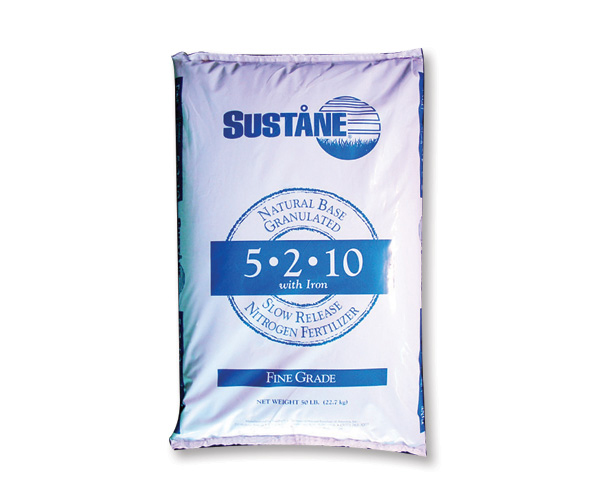The majority of turf diseases are caused by fungal pathogens but some fungi are more strongly pathogenic than others. Many of the common cool season turf diseases are caused by fungi that rely on a weakened plant and therefore reducing disease incidence and severity is often aligned to maintaining a strong sward. With on-going changes to European Legislation relating to pesticide use, it is more important than ever that an integrated approach to disease management is employed and central to this is an understanding that the cultural conditions can limit disease development. Making use of the genetic variation that exists between grass types and cultivars can also minimise disease development through a sward. By managing rootzone quality and using weather information services, it can also be possible to pre-empt disease outbreaks and plan an efficient integrated management strategy.
Cultural & Chemical Prevention:
Type 1 rings are the most damaging and the most likely to require major treatment. In severe cases, digging out can be the only answer – but bear in mind some large fairy rings extend more than 1 metre below the surface and to remove all the fungus you must dig out at least 30cm past the outside edge of the ring.
Type 2 fairy rings have less impact on turf performance than Type 1 and surface performance can be managed with PGR’s to prevent excess growth and nitrogen/iron/magnesium applications to maintain a more uniform colour sward. Azoxystrobin is approved for the treatment of Type 2 fairy rings –open up the soil around the ring first by aeration and apply as a drench combined with a wetting agent.
Type 3 fairy rings have very little effect on the grass plant itself, but the puffballs can affect ball roll on golf and bowling greens. Regular brushing/mowing during warm/wet/humid conditions combined with hand-picking where necessary will stop the problem from becoming worse.
For all types of fairy ring, the best practice will be to ensure that the least amount of hydrophobic soil develops in the rootzone. Wetting agent programmes should start early in the season in problem areas to ensure soils do not develop any water repellency. Makes sure you take cores from the soil and target wetting agents at the problem areas. This can include irrigating in heavily after application to wash thoroughly in to the desired depth.
Sound management practices will help prevent fairy rings. The more thatch you have, the more likely fairy rings are to develop. Prevent thatch development by applying sensible levels of nitrogen that will not induce excessive growth, develop a healthy soil microbial system that will naturally feed on organic material, aerate regularly to maintain good soil oxygen levels and improve drainage where possible.
Fungicide Only Options:
Curative and/or Preventative
- Azoxystrobin (Phloem/Heritage)
Fungicide Tank Mixes (per ha)
- 500g Phloem + 10l HydroFlo or 10l HydroSmart
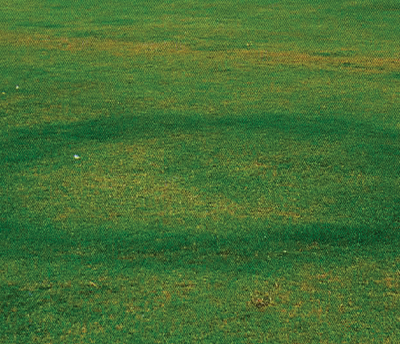
Example of Fairy Ring
Symptoms
Fairy rings are classified into three different types:
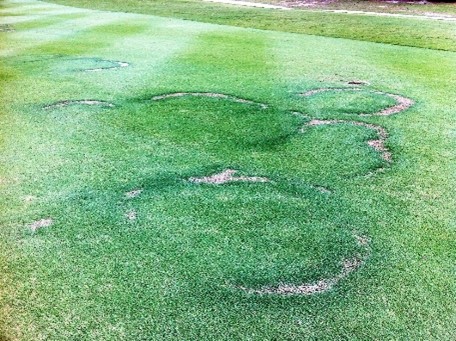
TYPE 1: The accumulation of fungal mycelium can eventually lead to a dead or dying ring of turf which is bordered on either side with darker green stimulated turf. There can be fruiting bodies associated with Type 1 fairy rings and these are considered the most damaging type as they lead to bare surfaces which are unsightly and can negatively effect playing characteristics.
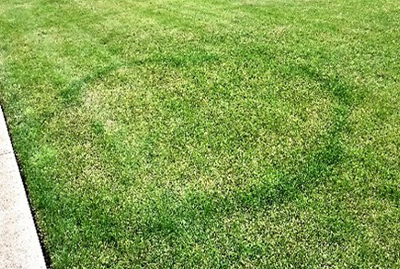
TYPE 2: A stimulated ring of grass. As the fungi moves through the soil it obtains nutrition from dead and decaying plant material by breaking down plant remains. Some of this is taken up by the plant roots leading to the stimulated green ring of grass. Type 2 rings can (but not always) produce small puffball fruiting bodies which can interfere with surface smoothness and presentation.
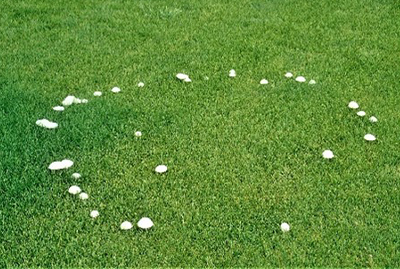
TYPE 3: These rings exhibit no change in the turf itself, but a ring of mushrooms/toadstools can be seen when environmental conditions are suitable – i.e. warm & moist. Regular mowing/switching/brushing of the surface will help prevent development of fruiting bodies and prevent the spread of fungal spores.
Non-Pesticidal Fairy Ring prevention:
Use Sustane 4.6.4 as an early season base feed to maximise soil and plant health. Use Sustane 5.2.4, 5.2.10 or 10.2.10 and/or Growth Products slow release liquids to promote low yield, healthy growth. Utilise a biostimulant such as Essential to help improve soil health and plant fight infection.
Use a preventative programme of HydroSmart wetting agent starting early in the season alongside a good cultural programme of aeration to prevent water repellent, hydrophobic soils. Mechanically remove thatch if required.



